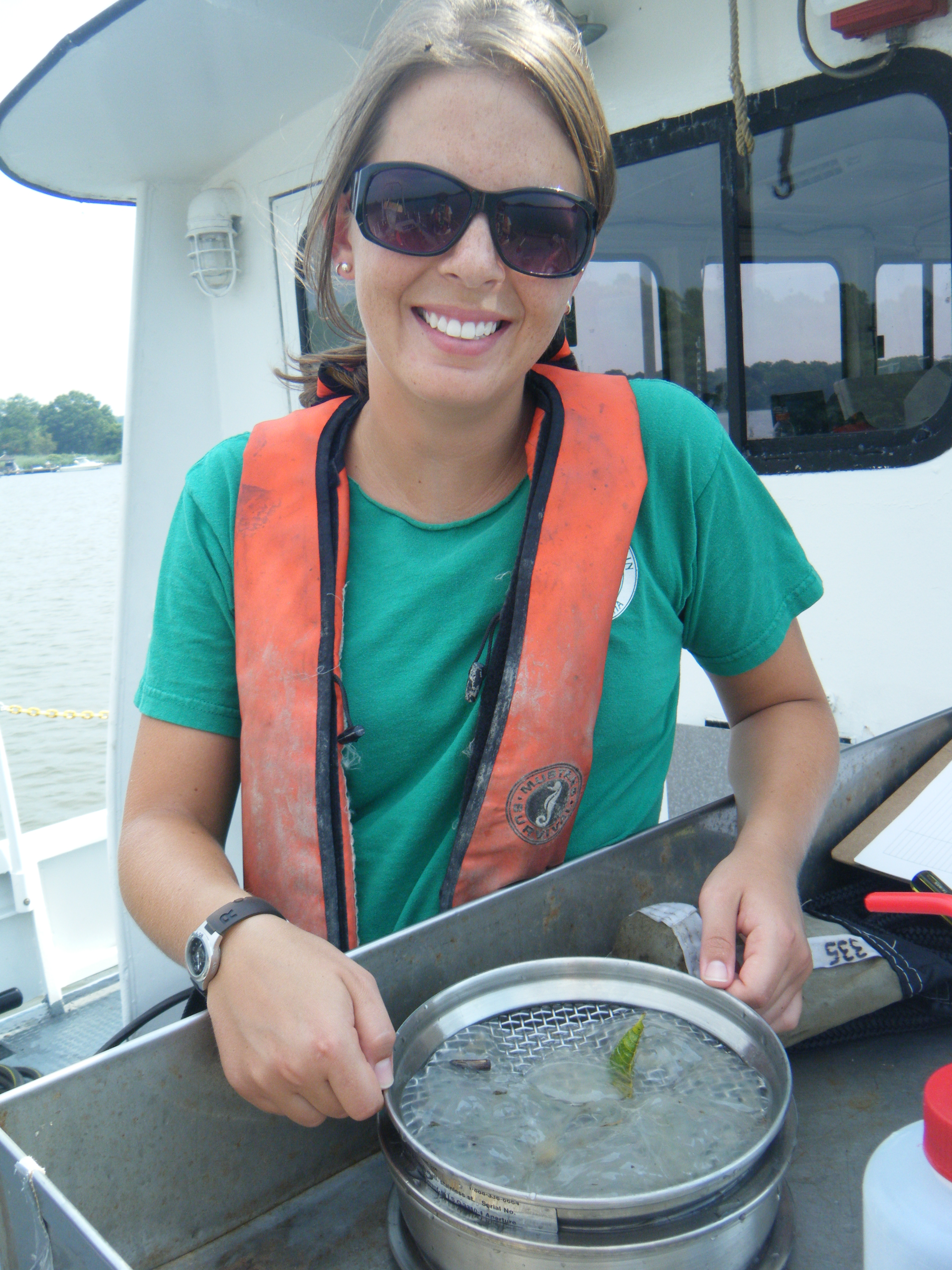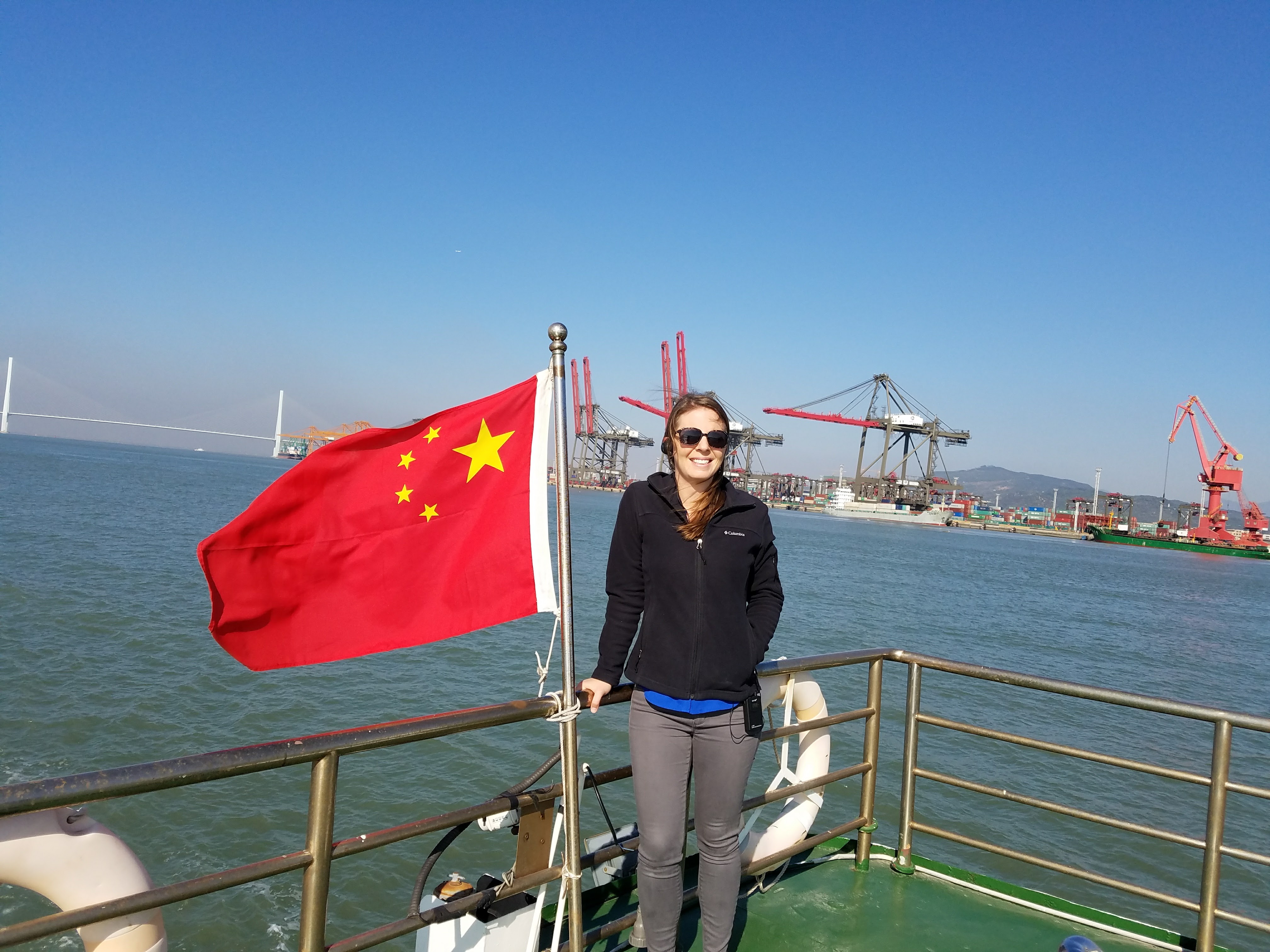July 1, 2019
Sherry Lippiatt is the California Regional Coordinator for the NOAA Marine Debris Program. Lippiatt got her start in public policy as a Sea Grant Knauss Fellow with the Marine Debris Program at the NOAA headquarters building in Silver Spring, Maryland. In 2016, she was recognized by NOAA as a National Ocean Service Team Member of the Year.
What was your background before entering into the Sea Grant Knauss fellowship?
When I started my fellowship, I was wrapping up my doctorate in ocean sciences at the University of California, Santa Cruz. I was studying the bioavailability of iron to phytoplankton in the Gulf of Alaska — the research we were doing was really interesting and important to understanding climate change, and we were at sea for long periods of time which was a unique experience.
I don’t exactly remember how I found out about the Knauss Fellowship, but when I researched it more, I was really excited to pursue a position that would allow me to have a broader impact.
What was your experience like working as a Knauss Fellow for NOAA’s Marine Debris Program?
I was drawn to this position because it was an emerging issue that was still somewhat unknown. It was still a small program and even back in 2010 the public was definitely drawn to the topic, and I felt I could have more of an influence compared to some other positions. The Marine Debris Program had hosted Knauss fellows in the past, and they were familiar with the process. They were also trying to expand, so there were opportunities to stay on after the fellowship. The staff was extremely supportive, in terms of professional development, and other activities that were taking place in Washington D.C. at that time.

I started my fellowship one month before the Deepwater Horizon oil spill. The Marine Debris Program sits within NOAA’s Office of Response and Restoration, which provides scientific support for the response to oil and hazardous chemical spills, in addition to the restoration side of things. After this disaster, it was all hands on deck, and they sent me to the Coast Guard headquarters for a few weeks to serve at the National Incident Command to assist with the GIS system being used for the response and to be a point of contact for other NOAA-related questions. I was terrified! They were sending me to represent NOAA. Looking back, this definitely helped to increase my confidence.
Outside of the experience supporting the Deepwater response, my main duty was to test and finalize the shoreline monitoring protocols that we developed for marine debris, which allowed me to do background research into the literature as well as some field work. I was also able to participate in a variety of smaller projects supporting the many aspects to the Marine Debris Program, including research, prevention and removal.
After my fellowship, I was asked to stay on as a contractor and continued working on the shoreline monitoring project and supporting our research team. In 2011, the major earthquake and tsunami hit Japan, which created a significant amount of debris that entered the Pacific Ocean. There were so many unknowns about what the impacts from this devastation would be, how much debris was going to wash up, and where. There was a lot of public concern and interest, which really overwhelmed our staff on the west coast. This response was going to be long-term, so my current position in California was created to fill these needs, and it worked out well for me to return to the state.
What exactly is marine debris?
Marine debris is basically any solid, man-made material that is in the marine environment which is not meant to be there. This covers everything from tiny pieces of microplastic, to consumer litter, lost or abandoned fishing gear such as nets, traps and monofilament line, and even abandoned or derelict vessels. Marine debris really runs the spectrum of different materials, but we have found that approximately 80-90% of debris items in the marine environment are plastic.
Why are you so passionate about this issue?
I believe the reason I am so passionate about marine debris, is because it is a big problem, and a solvable problem. It feels more solvable than a lot of other major environmental issues and requires a great diversity of stakeholders at the table. This includes government agencies, industry, nonprofits, and academics — there is a niche for everyone to come together and contribute. It is a really interesting issue to work on, there is more science coming out on how impactful marine debris is to species and habitats, which has the potential to impact human health. There are tangible solutions that can be connected to everyday decisions as a consumer, and your individual impact on the global marine debris problem.

What is one of the greatest accomplishments you have had with the Marine Debris Program?
For me, it has been the shoreline monitoring program, which has really expanded over the years. We have more than 300 sites globally, most of them in the United States, and some international. This is a really powerful program and one of the more rigorous shoreline marine debris datasets that exists, when compared to beach cleanup programs that are more focused on the cleanup rather than the data collection
On the other side of the spectrum, what are some of the biggest hurdles that you see for marine debris?
It is such an interdisciplinary issue, there are so many aspects to it including the science, policies, prevention efforts, and partners involved. There are also a lot of different types of debris, and different initiatives that we would like to pursue, but the issue is so widespread and varied that it makes you feel like you are spread a mile wide and an inch deep!
Since the Marine Debris Program is a non-regulatory branch of NOAA, how do you make an impact?
Our program does not get involved in the development of state and local policies, but we can share data related to the success of policies that have been implemented in the past. We have funded projects that look at innovations in fishing gear, which includes modifications in the gear and ways to reduce the likelihood of losing gear or mitigate impacts once it becomes lost or abandoned.
Another example is that our shoreline monitoring data shows that states with container deposit legislation, have less beverage container debris overall. Examples like this help with the development of prevention policies at all government levels and provide information for advocacy organizations or researchers to utilize. We also have longstanding partnerships with industry, so we are able to share the latest science and can hear about the constraints that they face with changes in the future.
What is your hope for marine debris?
If you would have asked me that eight years ago, I may have had a different response, because we have come so far. There has been an awakening amongst the public — in terms of the impacts of the single-use, disposable lifestyle we are used to. My hope is that this kind of awareness continues to grow and expand to the people in the farthest inland communities that don’t necessarily see the connections between the decisions made in everyday life and the impacts on the environment, whether it be in the oceans, inland waterways, or the terrestrial environment. I am also hopeful for further changes to product design and voluntary contributions by the industry to reduce packaging and the impacts of that packaging if it were to make its way into the environment.




